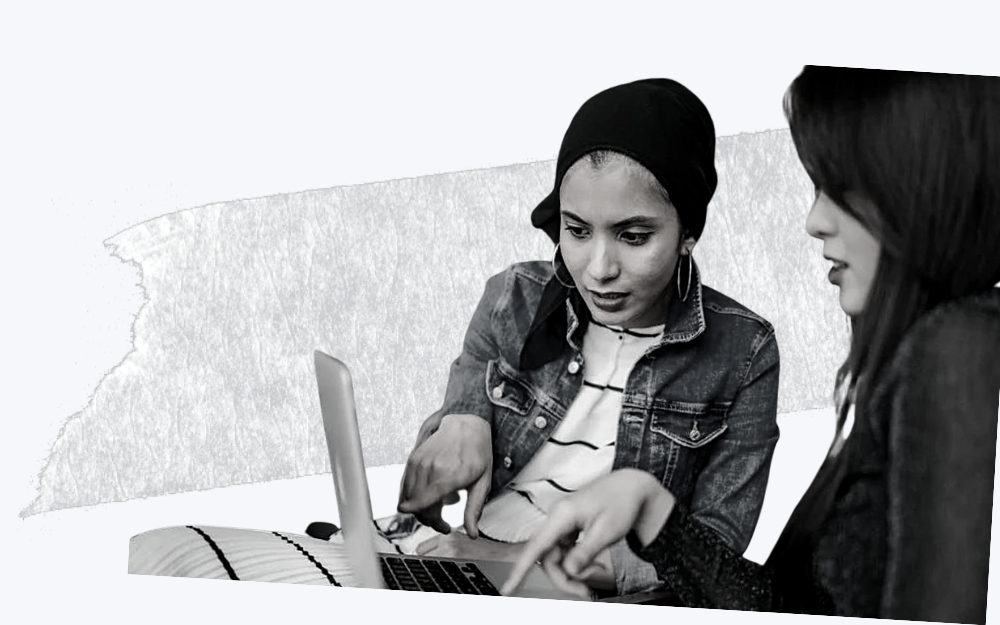Nonprofit professionals make important decisions daily—and with many details and stakeholders to consider, it’s easy to get overwhelmed.
When that happens, decision fatigue occurs.
Needless to say, it’s important to address decision fatigue in nonprofits, where the decisions we make impact the communities we serve.
Here, we look at the ways nonprofit leaders can address decision fatigue in themselves and their teams.
We also explore how KIT, an AI-powered nonprofit analytics tool, can help.
Why It’s Important to Address Decision Fatigue As Nonprofit Professionals
Adults make more than 35,000 decisions per day.
We may not always notice it: some of these decisions may be small, such as whether to expand the logo on that campaign banner or what color lanyards to assign staff and volunteers.
Other times, the decision-making process is more obvious: do we extend our current fundraising campaign, which will require more resources but also help us meet our fundraising goals?
The fatigue compounds when we are presented with far too many options for a single decision.
Also known as analysis paralysis or choice fatigue, having too many options makes decision-making more difficult—and possibly even leads to inaction.
When decision fatigue strikes, we typically fall into two different types of traps: decision avoidance, where we choose instead to do everything to avoid making that decision—and perform a mediocre job as a result.
Or we make rushed decisions, failing to weigh important factors and making a poor choice in the process.
So it also helps to be armed with important data to simplify these decision-making processes.
This is where Fundraising KIT comes in. As an AI-powered analytics tool designed for nonprofits, KIT gathers and presents every type of information about your performance as an organization.
But where Fundraising KIT really helps is in identifying which data is important at any given time for any given decision. This helps avoid analysis paralysis, and more importantly, decision fatigue.
Get Timely, Actionable Donor Insights with Fundraising KIT
KIT helps you uncover patterns and trends in your donor data. It keeps you abreast of any changes in your donor behavior so you can adjust your strategy and stay on track to meet your goals.
So let’s dive in. Here are practical ways to address decision fatigue and its root causes, and how KIT can help.
5 Ways to Address Nonprofit Decision Fatigue
While decision fatigue in nonprofits is impossible to avoid entirely, there are ways to address it before it becomes an issue.
1. Figure out what you can automate
Steve Jobs and his turtleneck, Mark Zuckerberg, and his grey t-shirts are less a style statement than the result of practicality.
For high-performing leaders, making big-impact decisions over the course of the day requires a lot of energy. Having a go-to outfit means having one less decision to make.
In similar ways, creating “go-to” protocols around predictable decision-making processes in your organization helps free up mental bandwidth for decisions that require more critical thought.
Done with a fundraising campaign? Systemize gathering and visualizing data, and going over key insights from the campaign in preparation for the next one.
You can do this with KIT by setting and automatically tracking fundraising goals.
KIT’s KPI dashboards let you compare your most recent fundraising performance to that from previous years, from the number of donors recruited to the total amount raised. It also reveals your organization’s performance compared to others in the industry.
KIT also helps build presentation-ready reports, making these insights easily actionable. This takes several more decisions off your hands.
To avoid decision and choice fatigue, look out for systems you can create and processes you can automate. This leads to greater bandwidth for bigger, more critical decisions.
3. Be mindful of when you make decisions
If decision fatigue is about being depleted of energy for decision-making, this means there is a point during the day when your energy tank is full.
For most nonprofit professionals, this is typically in the morning, fresh from a good night’s rest.
So it helps to make big, important decisions during the earlier part of the day.
If you have a meeting that involves big decisions, schedule it in the morning, before lunch. If you can afford to put off a big decision to the following morning, take that option instead of rushing into it before you head home.
While it’s impossible to perfect your schedule, it helps to be aware of your energy dips throughout the day and steer important meetings around that.
That said, leave low-stakes and low-impact decisions for the afternoon. If you can decide on these smaller decisions ahead of time, do so at the end of the day.
Choosing when to make big and small decisions is one way to manage your energy, and help avoid decision fatigue.
Now, it’s impossible to be rigid about when to make decisions. Some days, you simply need to make a call as you’re about to call it a day.
During these moments, it helps to be armed with important data to make those decisions.
This is another way Fundraising KIT can help.
Using real-time analysis—of everything from donor background and giving trends, to the best time of year for donor outreach and gift requests—KIT can come in handy for those big, time-crunch decisions you need to make.
While it’s not ideal to make big decisions last-minute, it certainly helps to ground your decisions on reliable data and insights.
Monitor Your Fundraising Performance with this FREE Dashboard
Use this template to record your fundraising metrics so you can better communicate your progress with your team.
4. Create parameters around decision-making
Having far too many choices is one way to accelerate and compound decision fatigue.
So although it might feel counterintuitive to limit your options, especially when you’re seeking the best solution to a problem, it actually helps to narrow them down—to focus on the quality of your options rather than the quantity.
You can do this by creating parameters around the time or number of options that come with making a decision.
Instead of spending an entire month mulling over a decision, for example, give yourself a deadline of one week. If you’re scheduling a meeting during which a decision needs to be made, don’t spend too long on that meeting—see if it can be achieved in 10 to 15 minutes.
Cut out distractions during that meeting, too. See if you can avoid involving technology at all, so colleagues need not refer to smartphone calendars or their laptops, for instance.
The number of decision-makers in a room can impact this as well. Do you need the entire marketing department to sign off on a campaign, for example, or would the marketing head or CMO suffice?
One-on-one meetings, or weekly check-ins with leadership to go over ways to move forward, can help simplify the parameters for certain decisions.
You can also limit your options. Instead of exploring all five strategies for an email campaign, limit yourself to two or three of the best options at a time. If these do not help you meet objectives, only then consider other options.
Simplifying the factors you’re working with around a single decision helps conserve energy, and avoid decision fatigue.
You can do this with KIT’s aggregated newsfeeds, too.
Customize your newsfeeds to present you with the most important information at a given time. Get access to relevant metrics and statistics, so you don’t have to look through every option at hand—only the best ones.
5. Don’t forget your mental and physical health
As nonprofit professionals, the work we do can be psychologically and emotionally draining. So it’s important to pay attention to our well-being as well, whether or not we’re working.
Be mindful of how you expend your energy and allocate your attention. Too many notifications distracting you at work? Switch them off, or get rid of those apps while you’re working.
Constantly switching between tasks and tabs? Allocate 15 minutes during the week to clean up those open windows, close what’s unimportant, and practice focusing on a single task at any given time.
Take full lunch breaks when you’re on your lunch break—no emails or responding to Slack messages.
Rest during your days off. Restore your energy reserves.
And if you sense you’re getting overwhelmed, avoid making decisions then. Take a step back. Often, all it takes is a full-fledge break to help us connect the dots, identify the right solution, or otherwise make better decisions overall.
To be on our peak performance, our mind and body need maintenance, too. Don’t overwork yourself at the cost of your health, your team’s performance, and your beneficiaries’ well-being.
No one benefits from decision fatigue, but there’s no telling how far-reaching the rewards are when your nonprofit team is well-rested and energized.
If you sense you’re getting overwhelmed, avoid making decisions then. Take a step back. Often, all it takes is a full-fledge break to help us connect the dots, identify the right solution, or otherwise make better decisions overall.
Making good decisions is imperative to running a successful nonprofit organization—one that makes a positive impact in the lives of their beneficiaries, and enhances the work experience of every staff.
So it’s important to avoid and address decision fatigue in your organization. With these practical strategies, backed by reliable analysis and data from KIT, nonprofits can be positioned to deliver their best—and make better decisions.

Peter Craigen
Head of Sales at Fundraising KIT
Peter loves to connect with people! As a Sales Professional, Peter has nearly a decade of professional experience helping solve complex challenges for businesses with the solutions he believes in. He is bold, confident, and takes initiative to improve anything he contributes to. He intimately understands the human side of technology and how important it is to put people first when looking through a technical lense.
Outside of work, Peter is deeply ingrained in the Sea to Sky community in British Columbia where he is an active volunteer, skier, and mountain biker.







